Photos: California condors released after treatment
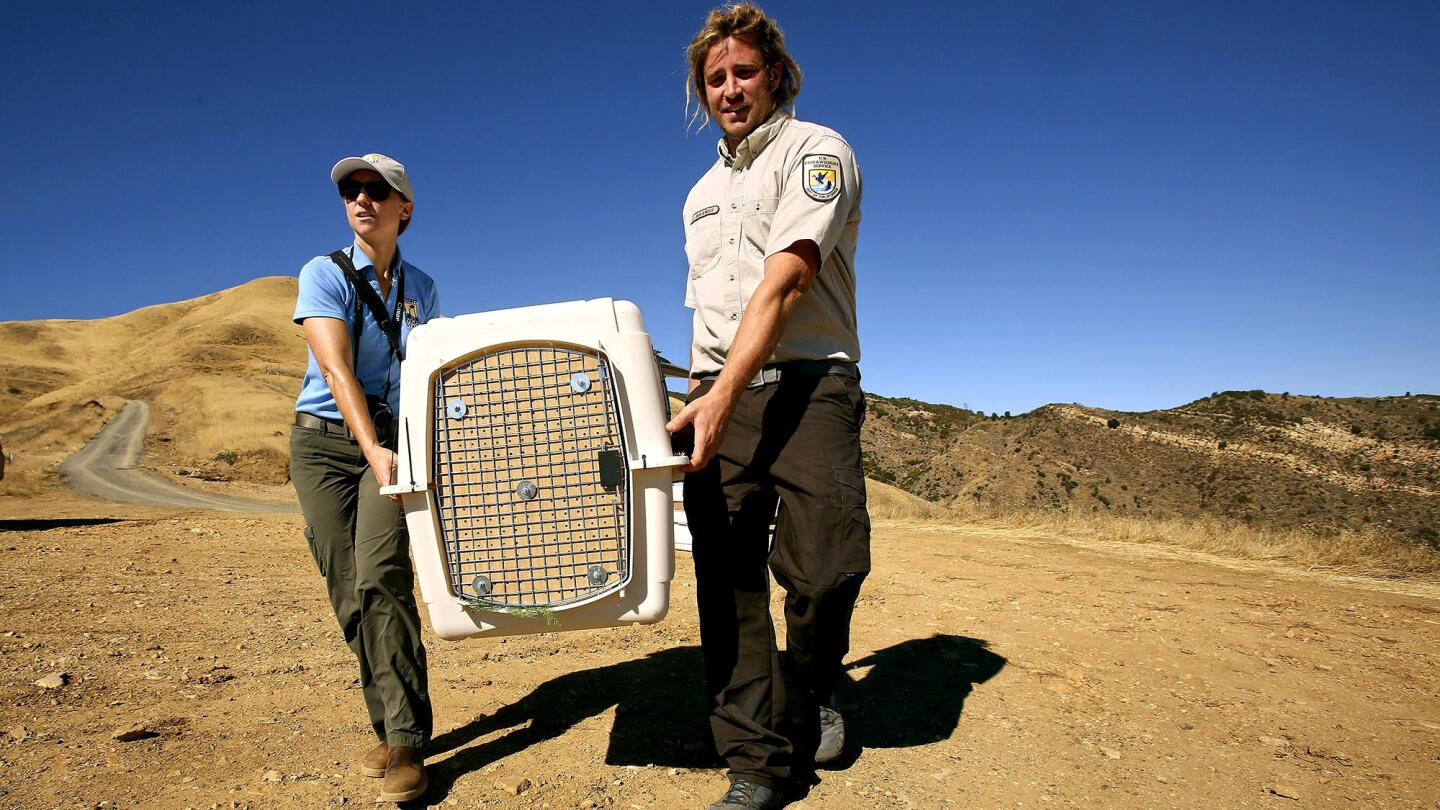
Devon Pryor, left, a conservation and research associate at the Santa Barbara Zoo, and Joseph Brandt, a condor biologist with the U.S. Fish and Wildlife Service, carry one of the three California condors that will be released back into the mountains of Ventura County after being rehabilitated. (Mel Melcon / Los Angeles Times)
A trio of California condors are released at Hopper Mountain National Wildlife Refuge by biologists with the California Condor Recovery Program after two were treated for lead poisoning and a third for a wing injury.
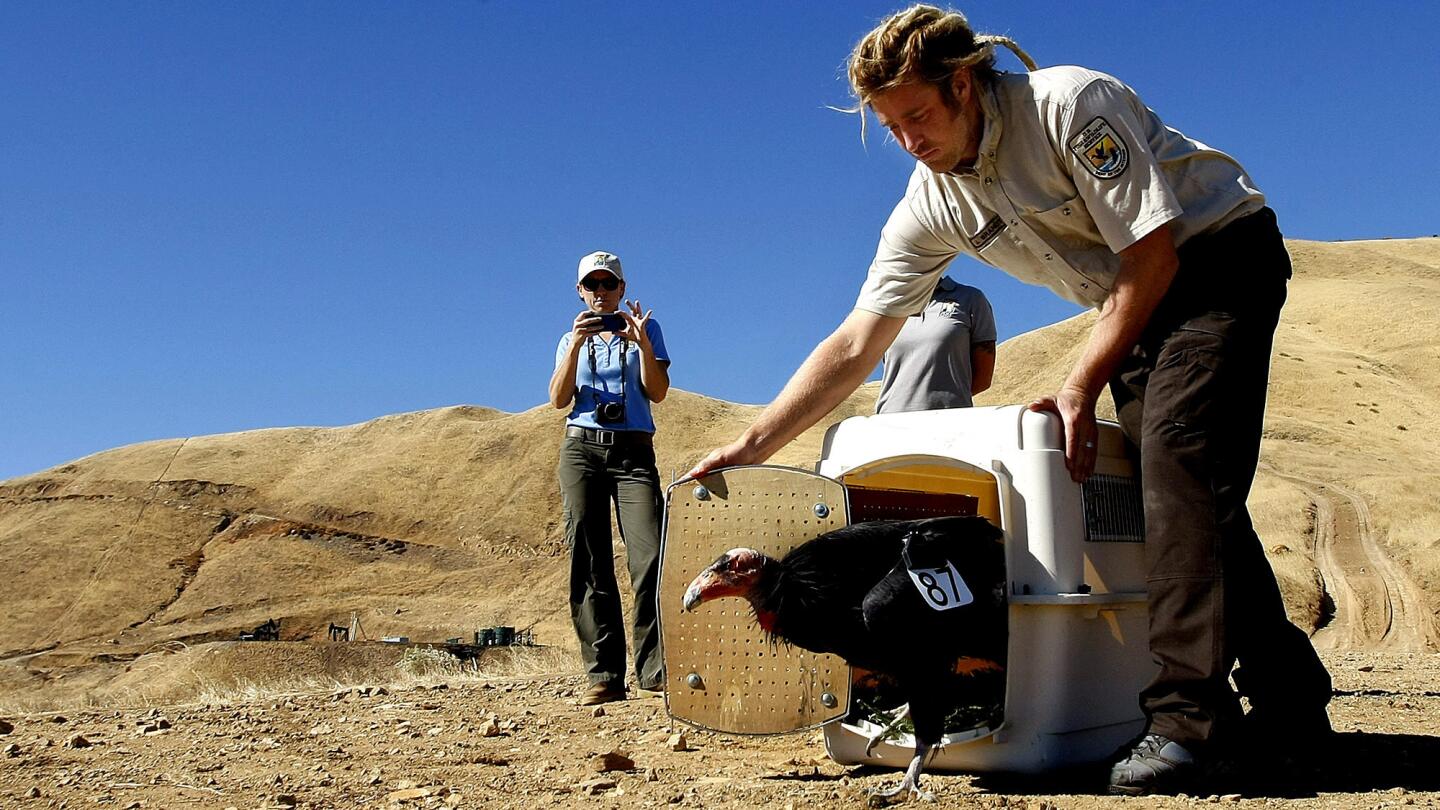
Devon Pryor, left, and Joseph Brandt release a female California condor from a kennel at Hopper Mountain National Wildlife Refuge north of Fillmore. The bird had been treated for lead poisoning. (Mel Melcon / Los Angeles Times)
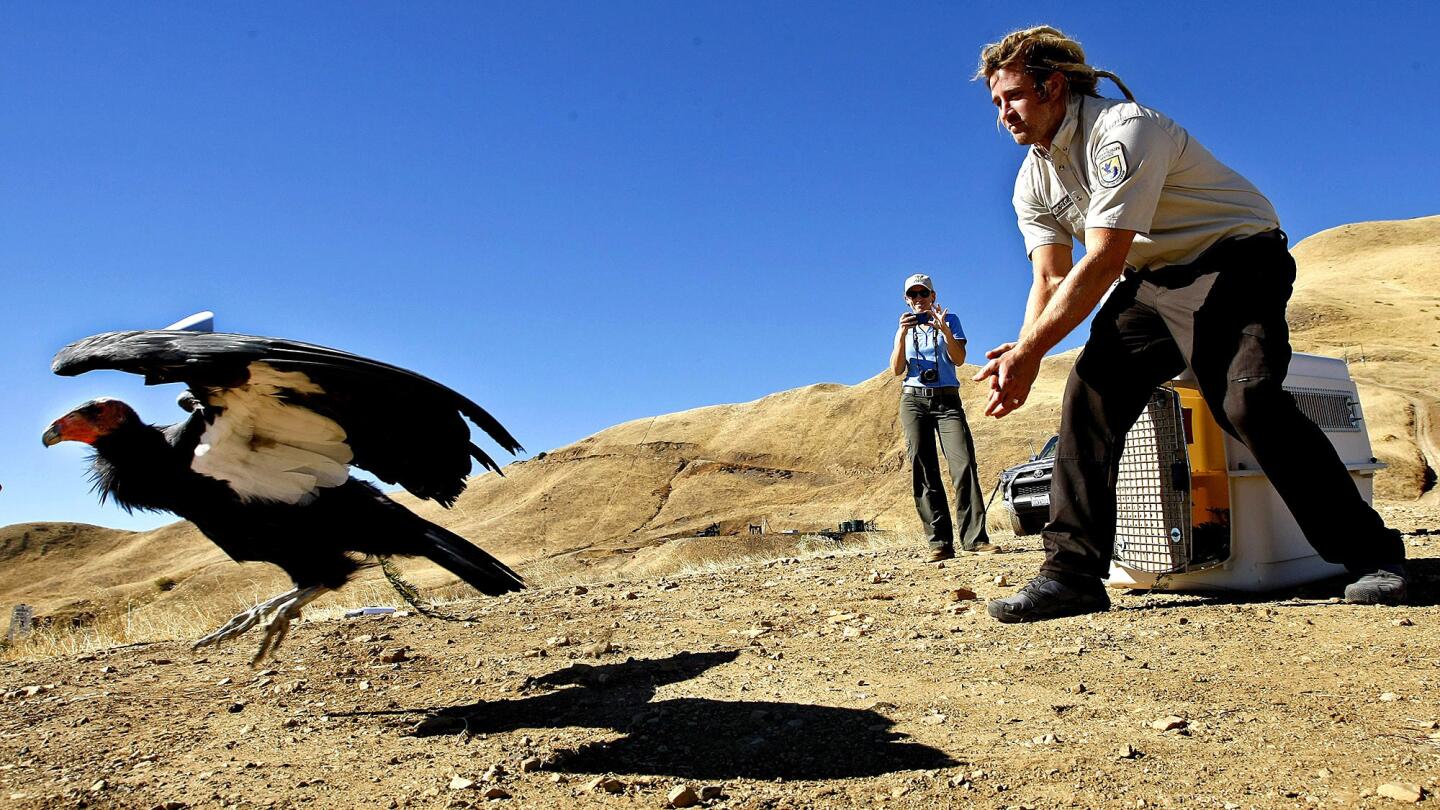
The female condor takes flight into a brilliant blue sky. (Mel Melcon / Los Angeles Times)
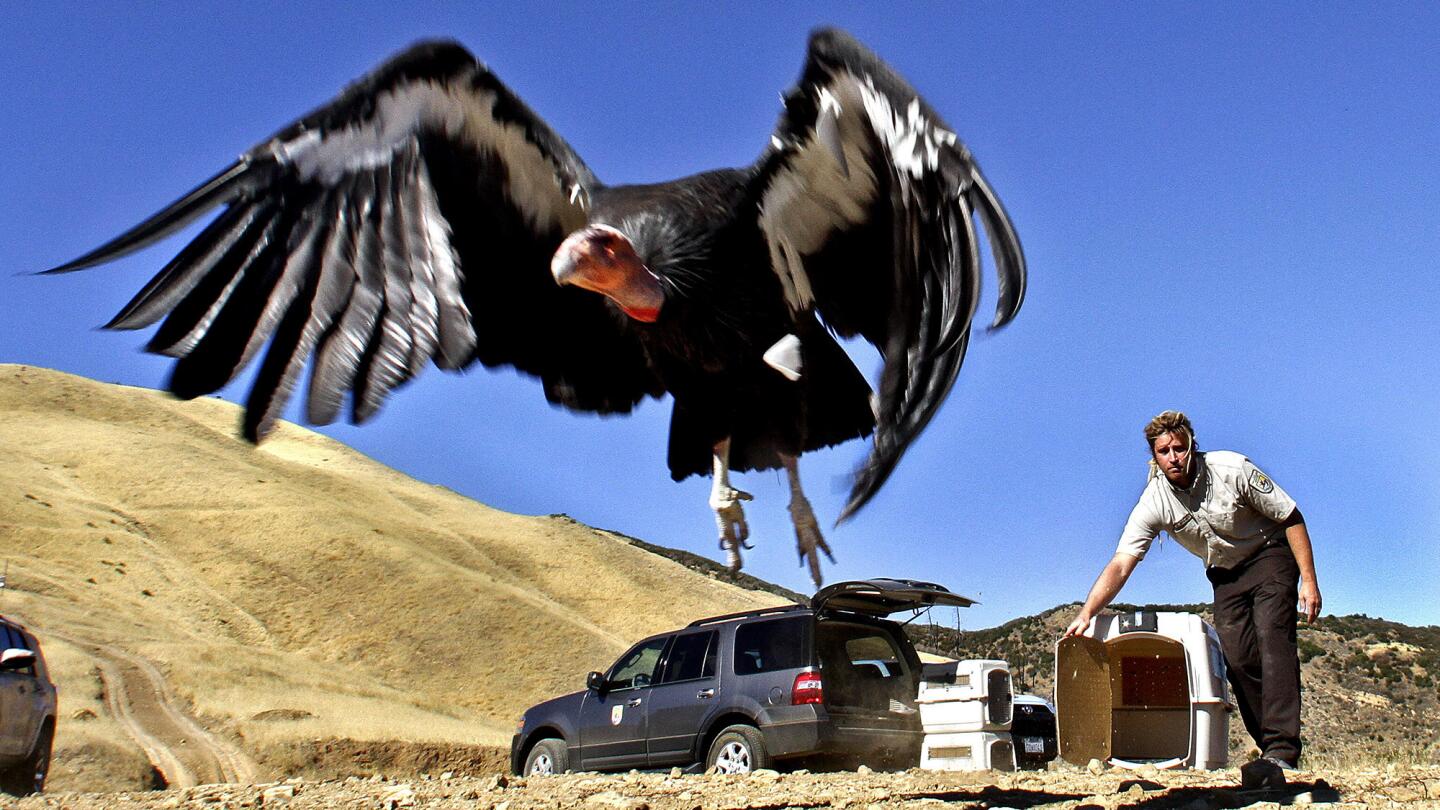
A female condor takes to the sky north of Fillmore. This bird and two others that had been released this day were fitted with individual number tags, as well as radio transmitters to allow scientists to track their movements. (Mel Melcon / Los Angeles Times)
Advertisement
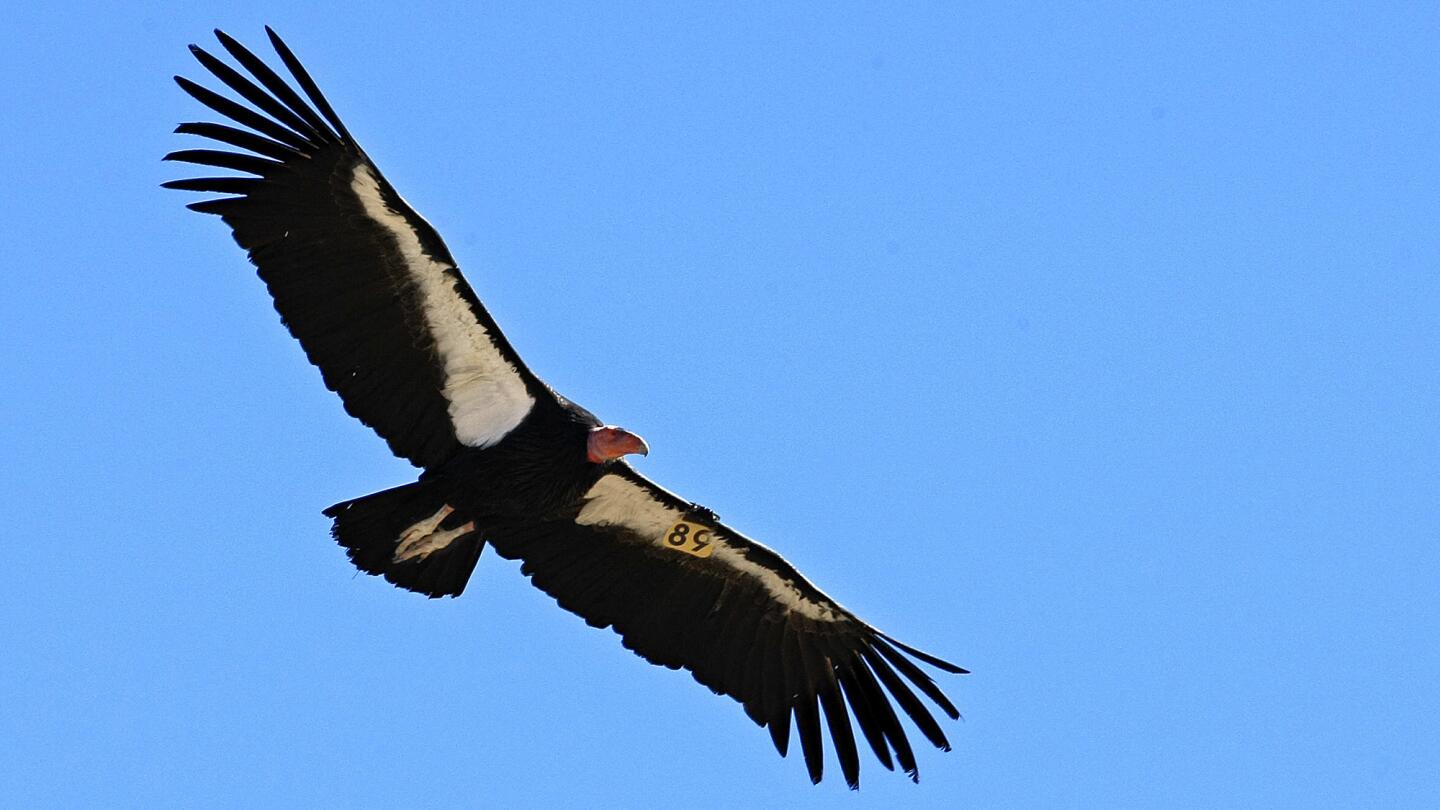
With her “89” identification tag clearly visible, a female condor who had been treated for lead poisoning soars above Hopper Mountain National Wildlife Refuge. (Mel Melcon / Los Angeles Times)
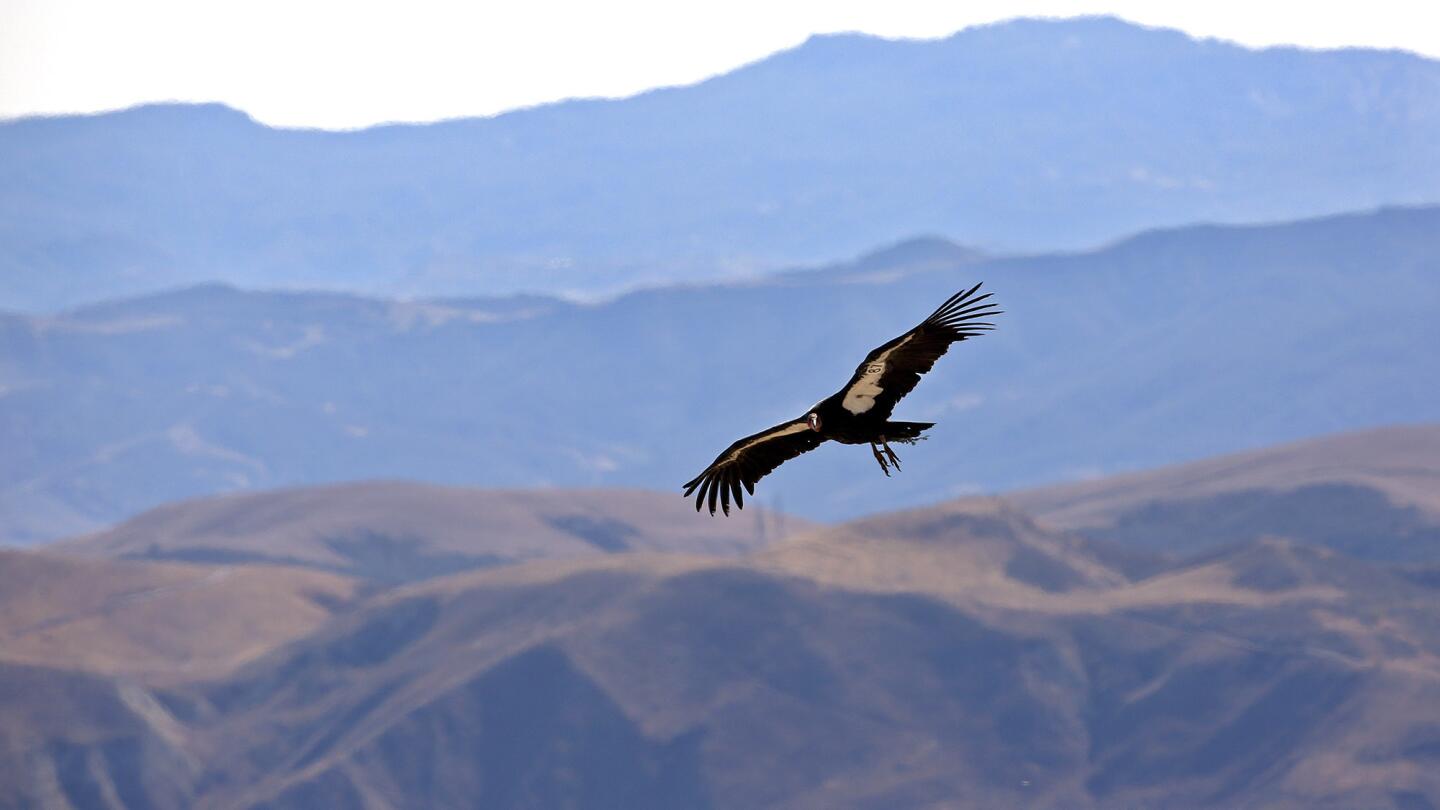
A female California condor soars above the Hopper Mountain National Wildlife Refuge. Barring major setbacks, the vulture that scientists know as Gymnogyps californianus may be eligible for down-listing from endangered to threatened within a few decades, researchers say. (Mel Melcon / Los Angeles Times)
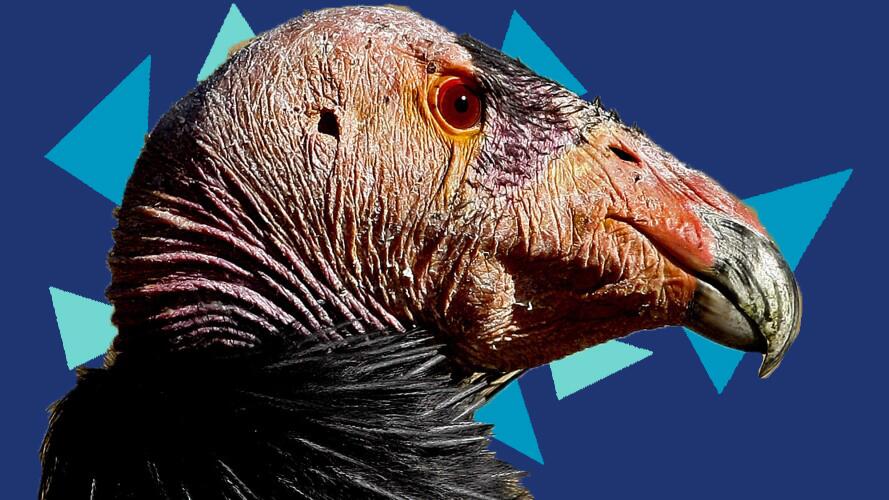
A male condor who had been treated for a wing injury takes in the view at Hopper Mountain National Wildlife refuge. (Mel Melcon / Los Angeles Times)
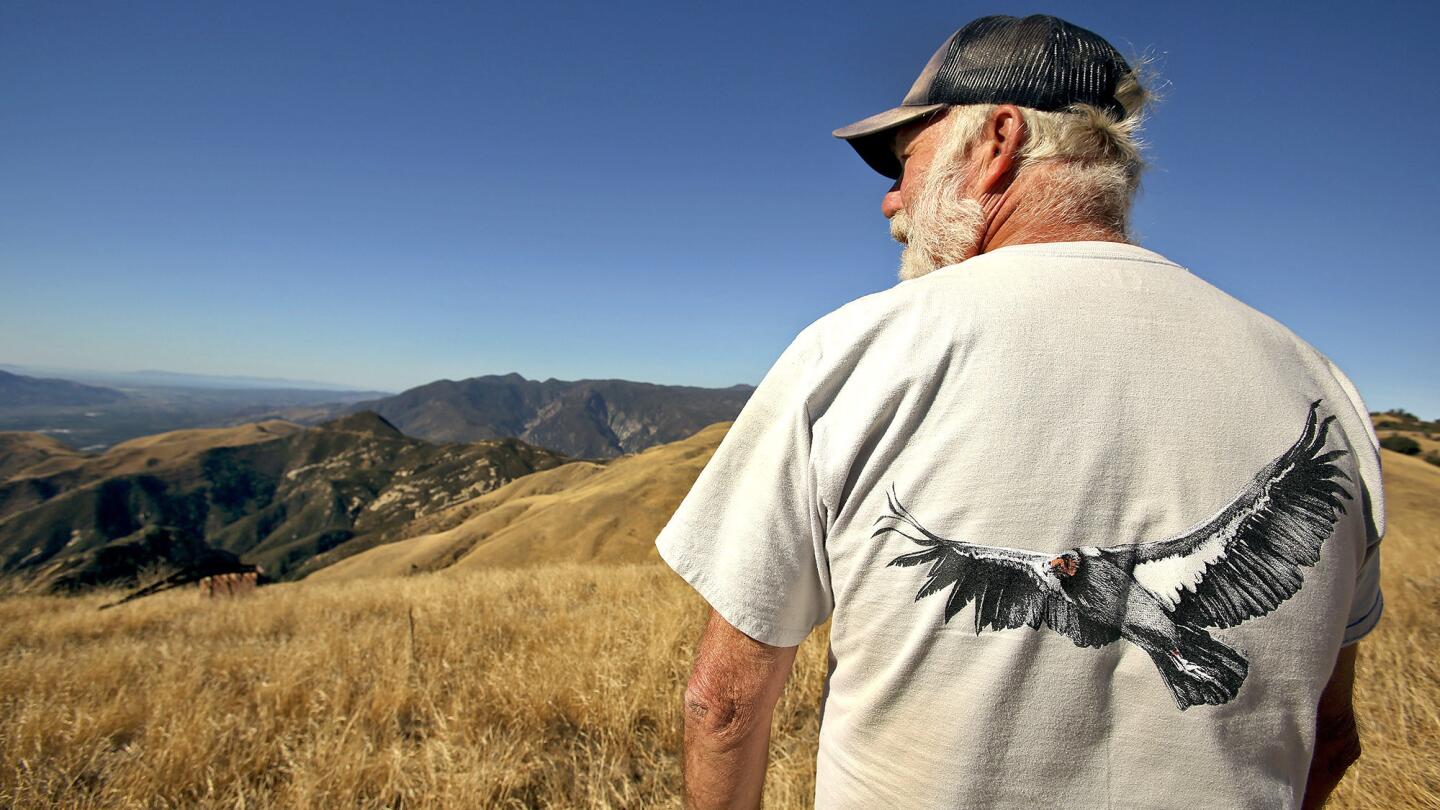
Bill Langford, a volunteer with the U.S. Fish and Wildlife volunteer, was on hand to watch as three rehabilitated California condors were released north of Fillmore. (Mel Melcon / Los Angeles Times)
Advertisement
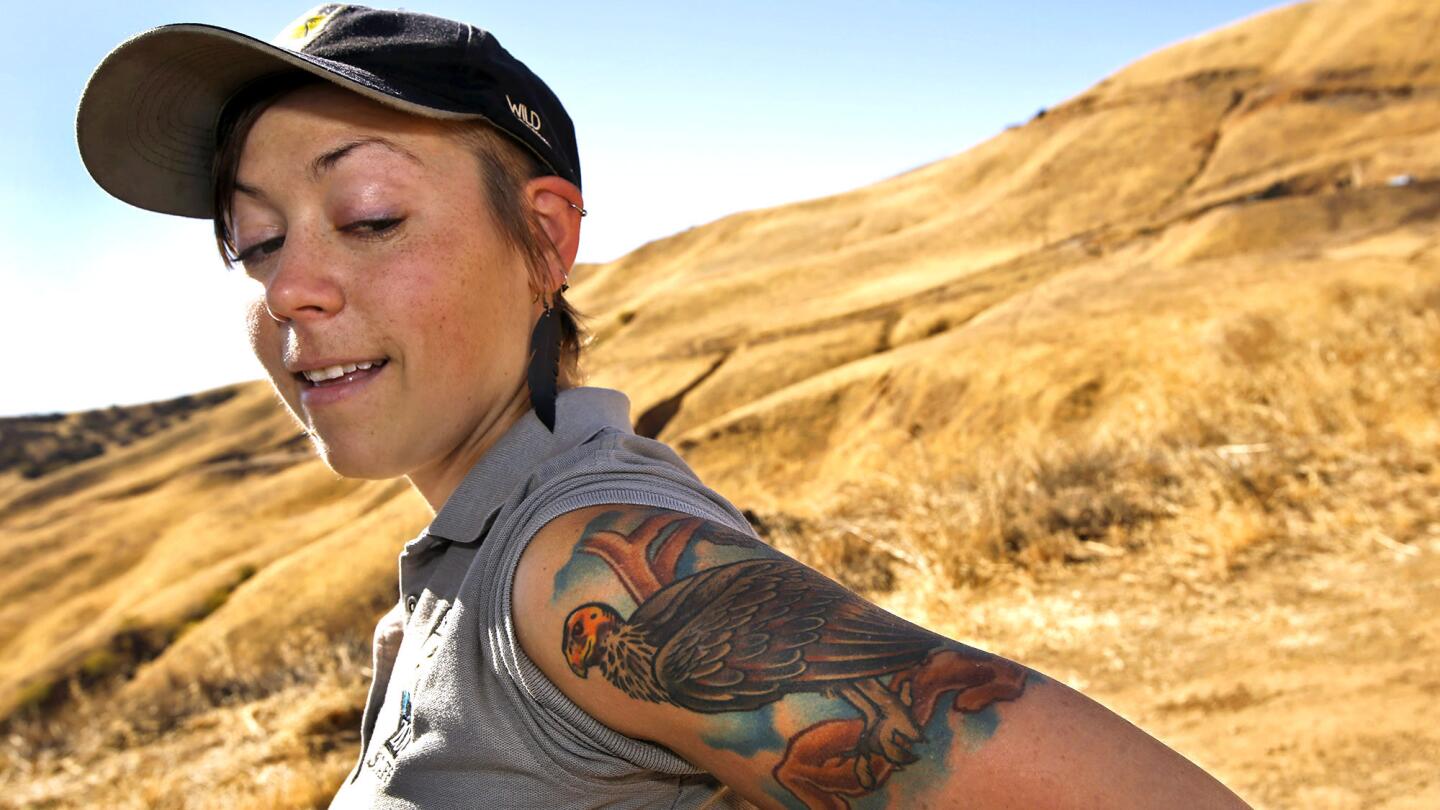
Molly Astelle, 29, a condor technician at the Santa Barbara Zoo, has a large condor tattooed on her arm. She assisted with the recent release of three condors north of Fillmore. (Mel Melcon / Los Angeles Times)
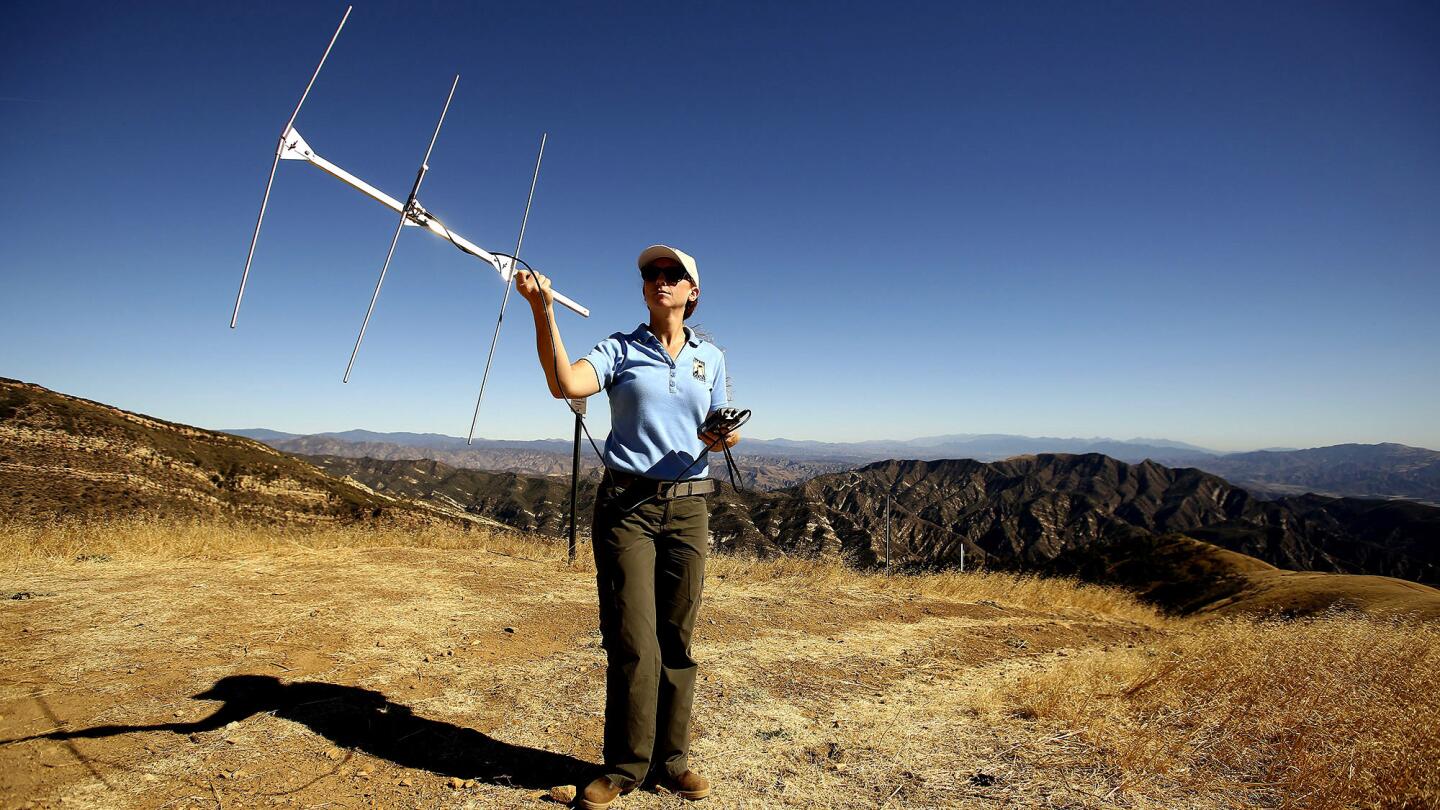
Devon Pryor holds a yagi antenna to pick up telemetry signals on California condors equipped with radio transmitters. (Mel Melcon / Los Angeles Times)
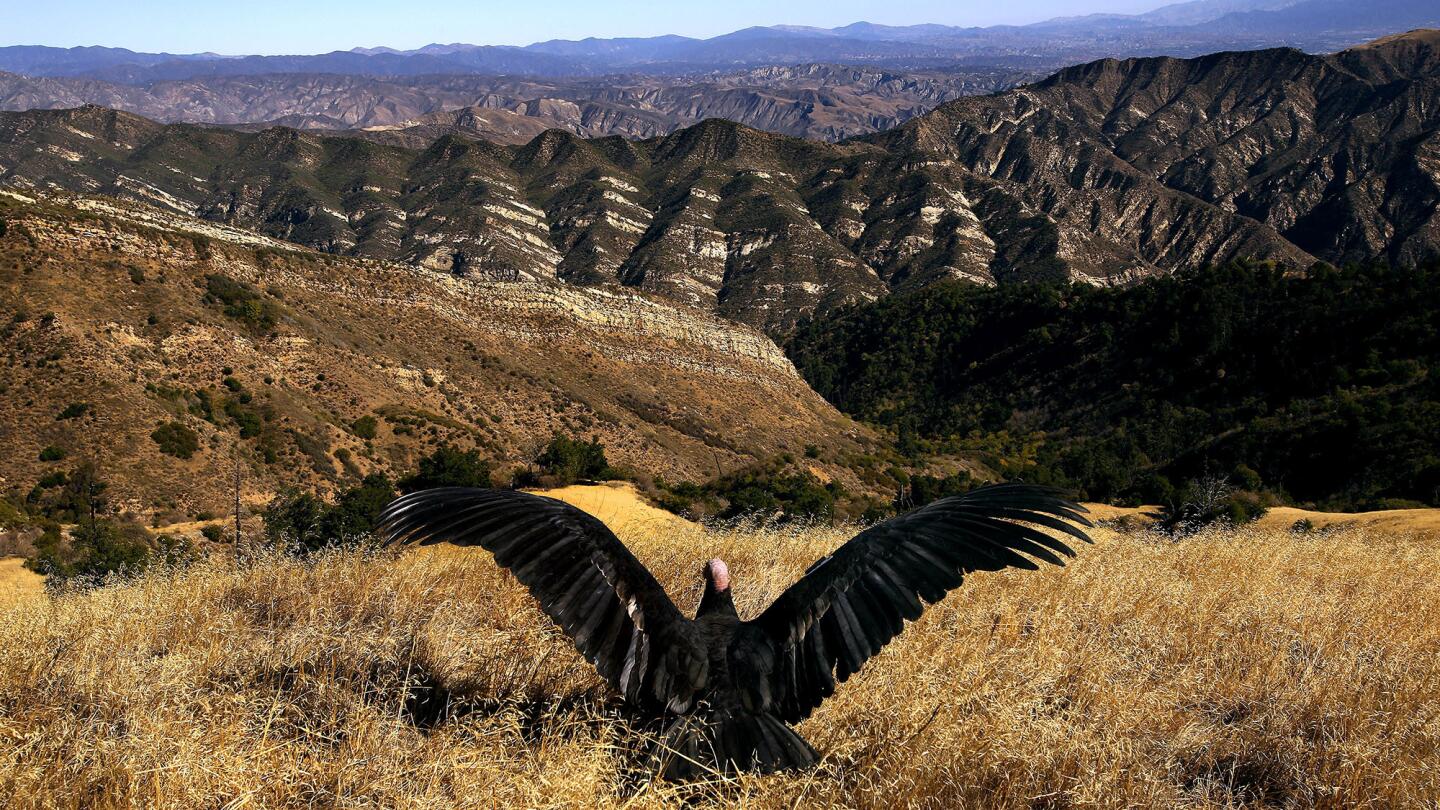
A male California condor -- fully rehabilitated from a wing injury -- stretches out and takes in the view at Hopper Mountain National Wildlife Refuge. (Mel Melcon / Los Angeles Times)
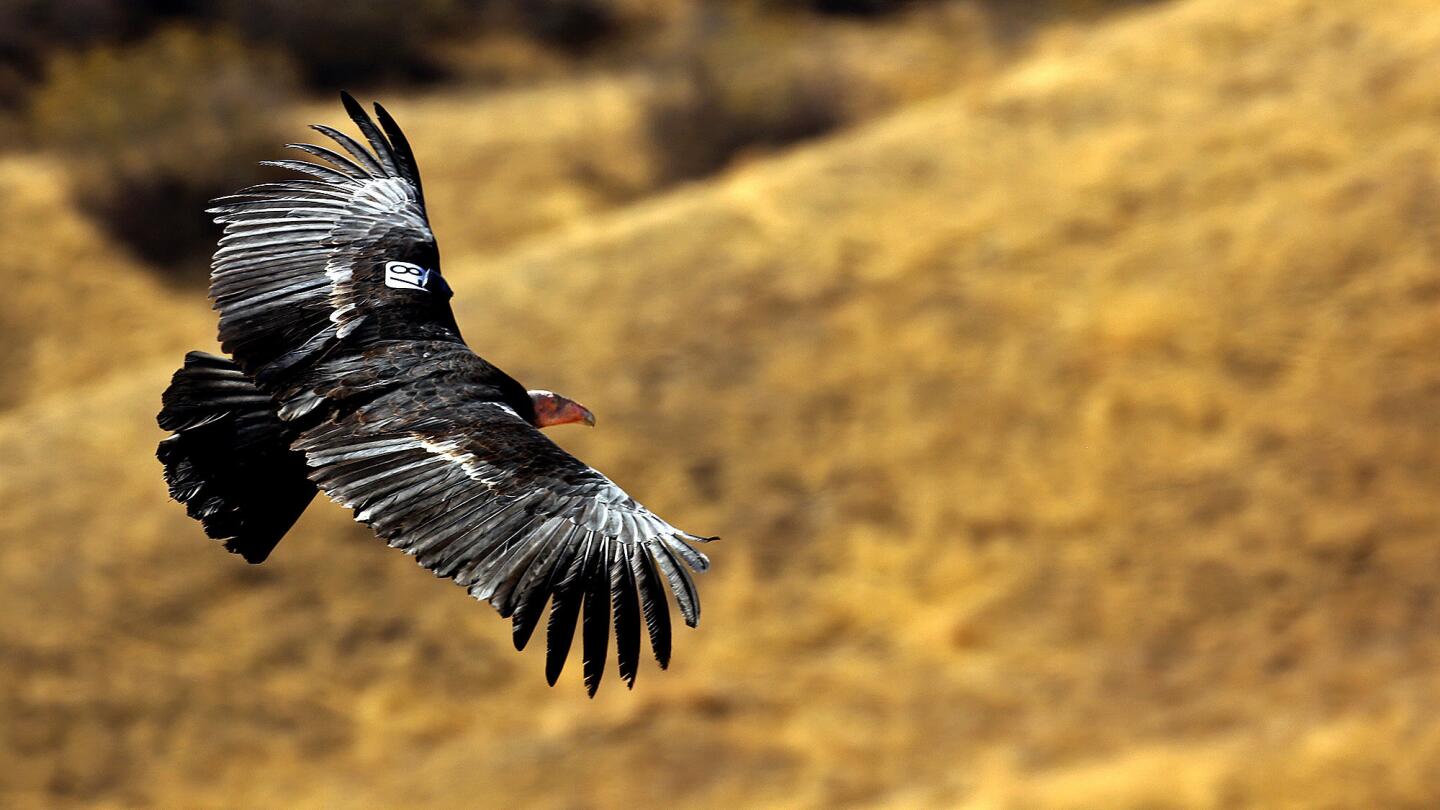
A female condor, recovered from lead poisoning, takes to the sky after being released by condor biologist Joseph Brandt. (Mel Melcon / Los Angeles Times)
Advertisement
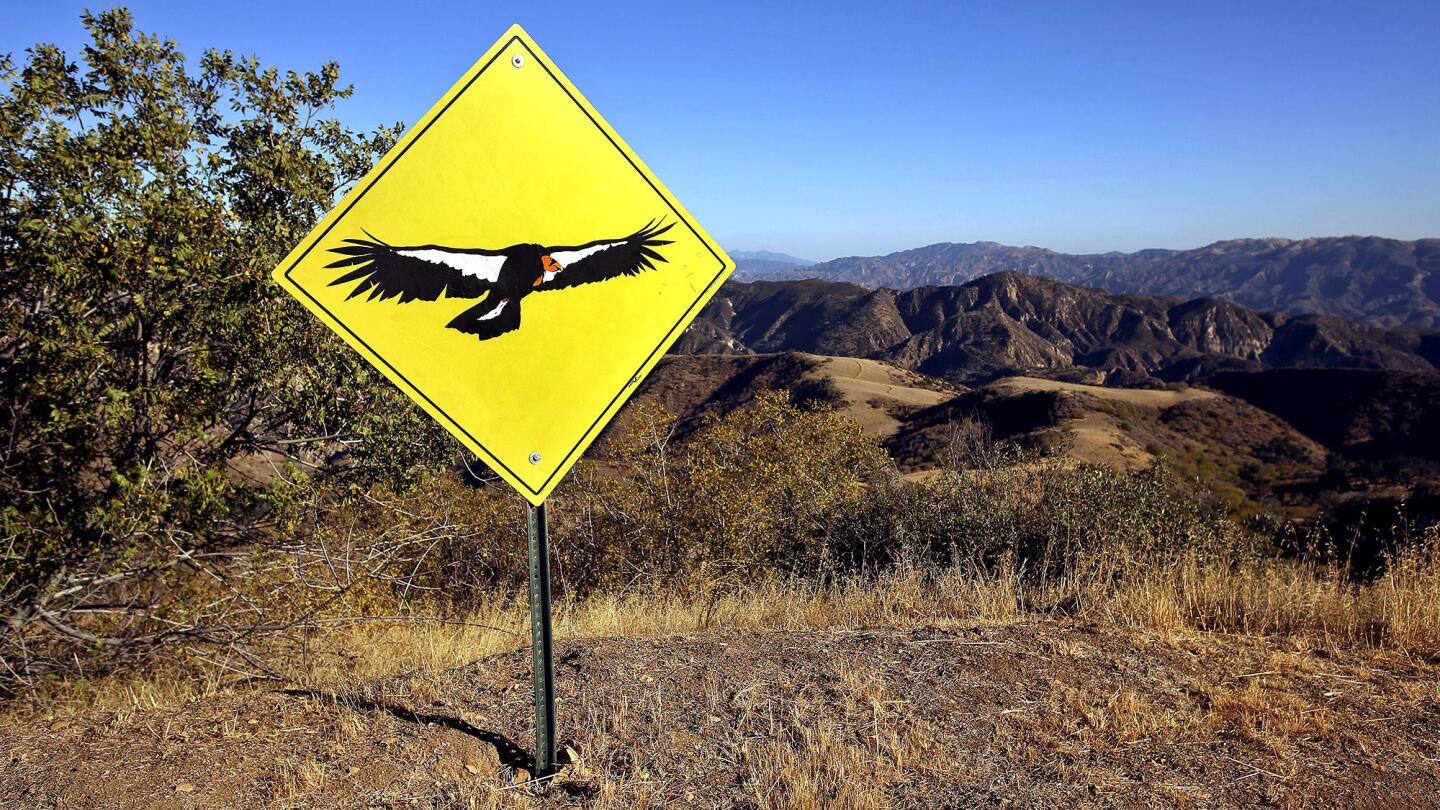
A sign indicates the presence of California condors at Hopper Mountain National Wildlife Refuge north of Fillmore. (Mel Melcon / Los Angeles Times)
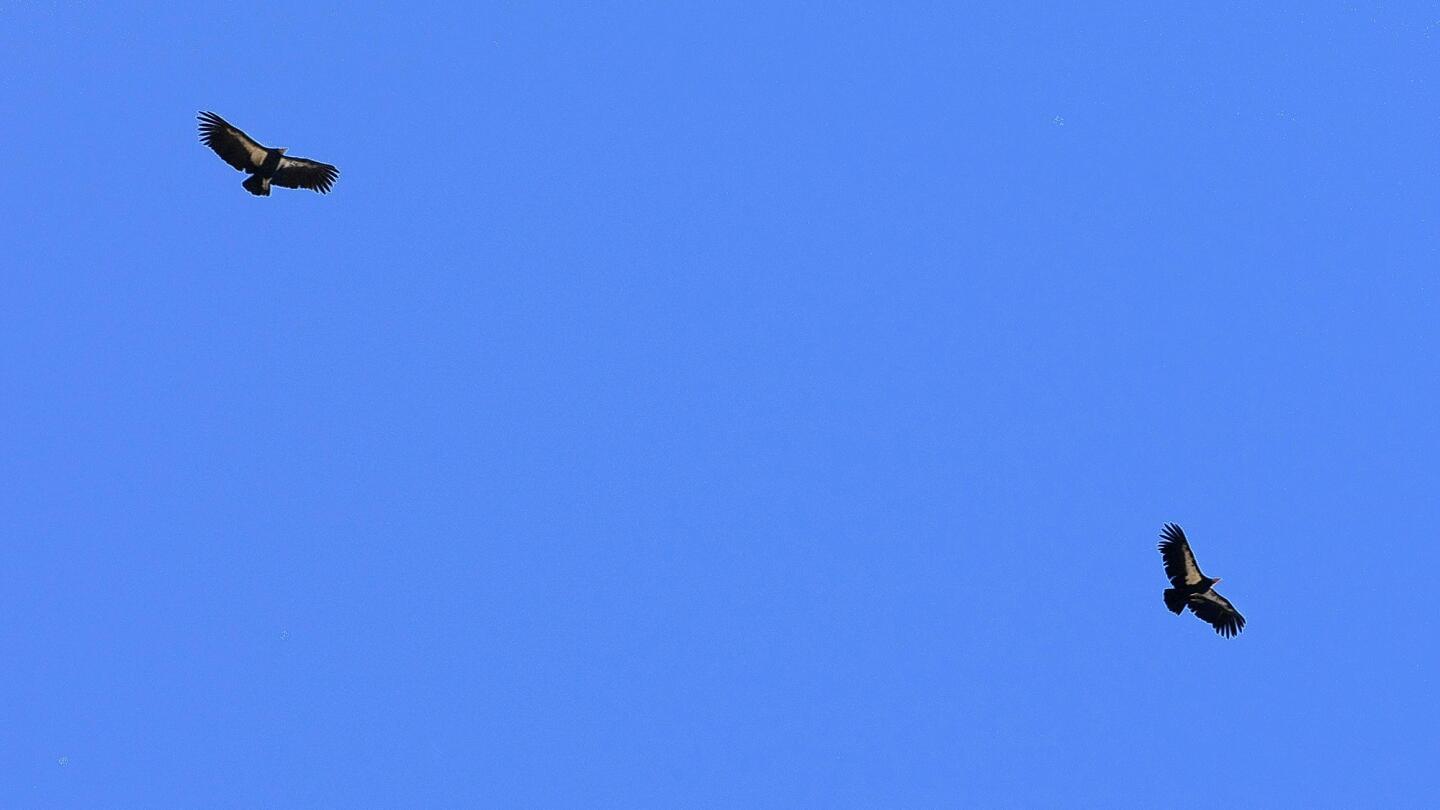
Two condors fly off together above Hopper Mountain National Wildlife Refuge. The huge birds have red-ringed amber eyes, a 9 1/2-foot wingspan and razor-sharp beaks. (Mel Melcon / Los Angeles Times)



